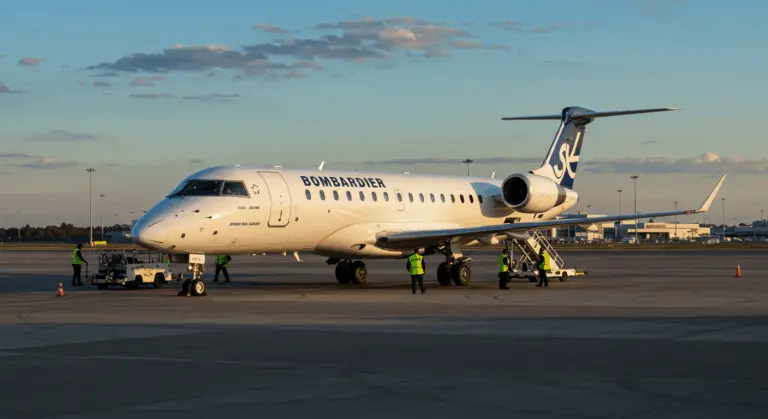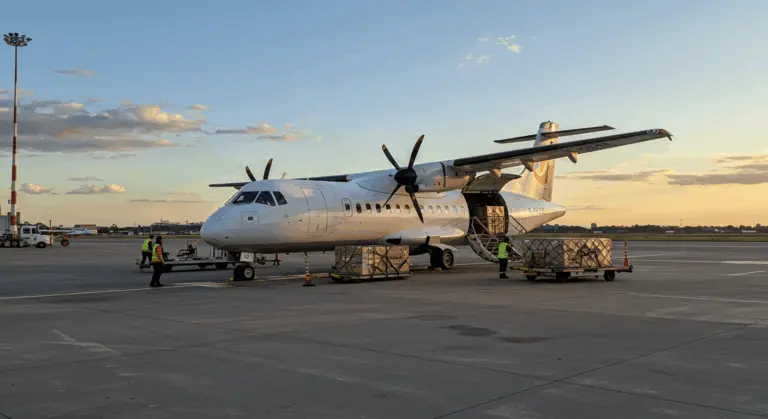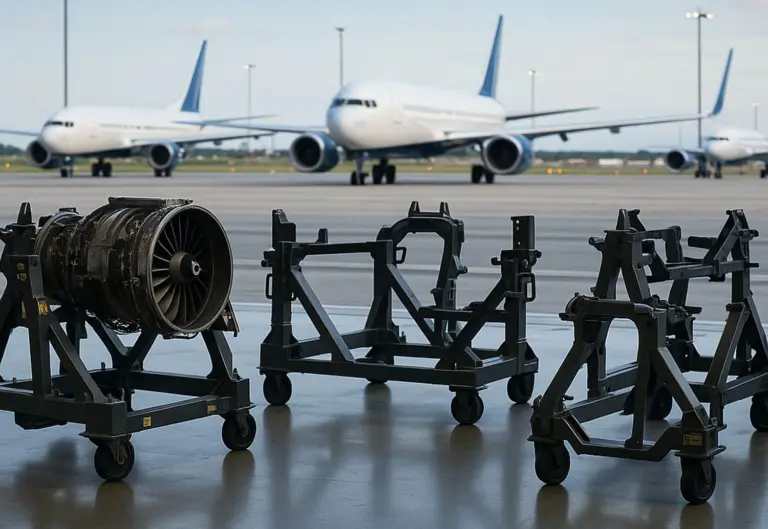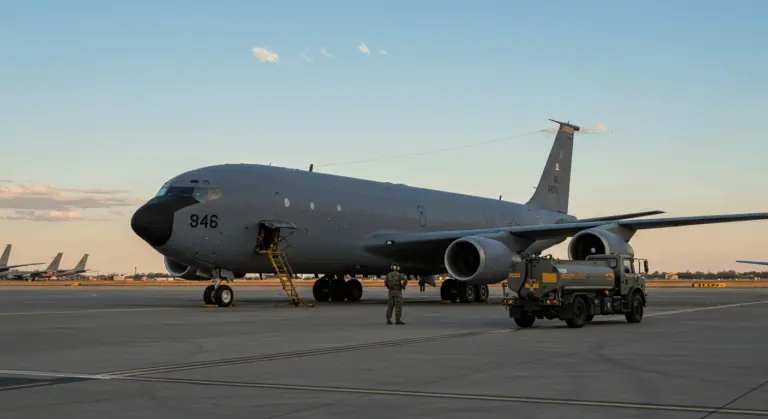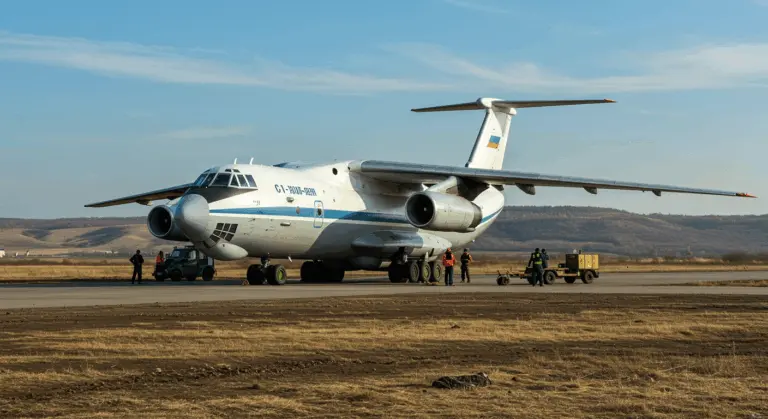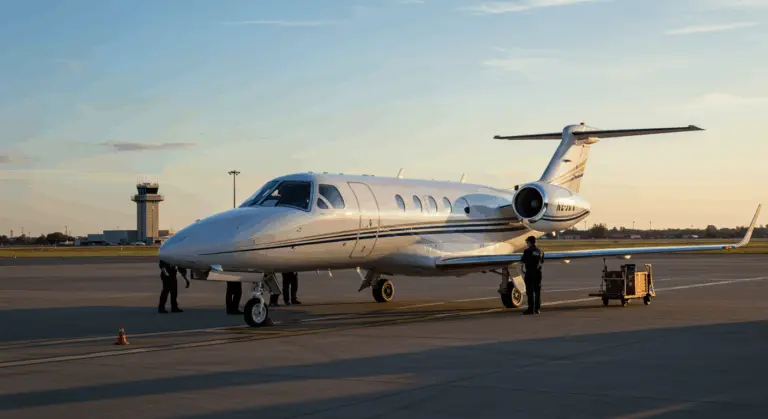Overview of the Lockheed C-5 Galaxy
The Lockheed C-5 Galaxy serves as the backbone of the U.S. Air Force’s strategic airlift capability, delivering intercontinental transport for outsized and oversized loads that no other American aircraft can handle. This colossal machine—the largest in the USAF fleet—carries critical cargo and combat-ready troops to any corner of the globe with minimal advance warning.
Superior engineering characterizes the C-5’s design. Its sophisticated 28-wheel landing gear system provides outstanding flotation and crosswind landing capabilities, while an innovative three-position kneeling system significantly reduces the aircraft’s frame for streamlined loading operations.
The C-5’s most distinctive feature is its self-sufficiency in global operations. An advanced communications suite operates alongside a triple inertial navigation system (INS), enabling the Galaxy to operate effectively without ground-based navigational aids. This independence makes it an ideal aircraft for missions to remote or undeveloped regions where infrastructure is scarce.
The C-5’s impressive cargo capacity makes it essential for military and humanitarian missions. It can transport a wide range of loads, including:
-
36 fully-loaded 463L-type cargo pallets
-
270 passengers in its air-bus configuration
-
Two M1-A1 Abrams tanks
-
Six transcontinental buses
-
Seven UH-1 Huey helicopters
-
A 74-ton U.S. Army mobile scissors bridge
Development of the C-5 Galaxy
The C-5 Galaxy’s development story began in the turbulent 1960s, born from the U.S. Air Force’s pressing need for a heavy intercontinental airlifter. The existing C-141 Star lifter, capable as it was, simply couldn’t handle the oversized military equipment that modern warfare demanded.
The program faced significant challenges from the start. Ambitious technical requirements clashed with tight budgetary constraints. Yet when Lockheed secured the contract in 1965, beating out Boeing, they embarked on creating what would become the Western world’s largest aircraft. Both the stakes and strategic importance were clear.
Early production proved tumultuous, plagued by technical problems and spiraling cost overruns that sparked political firestorms. Still, the aircraft achieved its milestone entry into service in 1970, marking a major advancement in military airlift capabilities. The original C-5A model validated the ambitious concept while simultaneously revealing critical areas demanding improvement—lessons that would shape future variants.
Decades of evolution followed. The 1980s brought the C-5B model, integrating lessons learned from the A variant. But the most significant improvement emerged with the C-5M Super Galaxy program—a comprehensive modernization featuring advanced General Electric engines, modern avionics, and comprehensive reliability improvements. These continuous improvements have established the C-5 as the backbone of U.S. military logistics, with ongoing enhancements extending its operational life well into the 21st century.
Key Milestones in C-5 Development
The C-5’s development includes several key milestones:
-
June 30, 1968: The first C-5 prototype completes its maiden flight.
-
1970: The C-5 officially enters service with the U.S. Air Force, providing unprecedented airlift capabilities.
-
1980s: The C-5B variant is introduced, incorporating significant enhancements such as improved engines, extended-life wings, new radar and navigation systems, and an automated flight control system.
-
Early 2000s: The C-5M Super Galaxy modernization program begins, dramatically enhancing performance and reliability with new engines and modern avionics, extending the fleet’s operational life.
Design Features of the C-5 Galaxy
Powerful engines enable the C-5’s exceptional performance. The C-5B variant uses four TF-39-GE-1C turbofan engines, while the modernized C-5M features more efficient General Electric CF6-80C2 power plants. These engines, combined with the aircraft’s extended-life wings, deliver the Galaxy’s exceptional intercontinental range and formidable heavy-lift capacity.
Aerial refueling capability significantly expands the C-5’s operational reach. This feature allows the Galaxy to reach virtually any point on Earth with minimal ground stops, receiving fuel from aerial tankers mid-flight. This provides exceptional operational range and flexibility.
Twelve integral wing tanks form the C-5’s fuel system, collectively holding 51,450 gallons (332,500 pounds) of fuel. This massive capacity provides the endurance essential for extended global missions.
Advanced avionics enhance the C-5’s operational capabilities. Color weather radar improves situational awareness, while redundant inertial navigation systems ensure pinpoint global navigation. An automated flight control system substantially reduces pilot workload. Meanwhile, the Malfunction Detection Analysis and Recording System delivers comprehensive diagnostics, greatly improving maintenance efficiency.
Operational History of the C-5 Galaxy
The C-5 Galaxy’s service history began with the ceremonial rollout of the first C-5A (tail number 66-8303) on March 2, 1968. This began a distinguished service career spanning over five decades.
Since 1970, the C-5 has served as the USAF’s premier strategic airlifter for outsized cargo. Its unique combination of massive capacity and intercontinental reach makes it invaluable for both military operations and humanitarian missions worldwide.
Major military operations have consistently shown the C-5’s strategic importance. During the 1973 Yom Kippur War, it formed the backbone of Operation Nickel Grass, delivering critical supplies to Israel under intense time pressure. Operation Desert Storm in 1991 saw the fleet transport enormous quantities of military equipment to the Middle East. Today, the modernized C-5M Super Galaxy enhances this strategic importance.
The C-5’s service record includes some challenges. Early models suffered reliability issues, while the complexity of maintaining such sophisticated aircraft generated substantial costs. However, continuous upgrades and the transition to the C-5M Super Galaxy configuration have largely resolved these concerns. This massive airlifter remains the cornerstone of American global reach and military logistics. The C-5’s operational record demonstrates both its design’s fundamental excellence and its indispensable role in projecting American power across the globe.
C-5 Galaxy in Military Conflicts
The C-5 Galaxy has supported nearly every major U.S. military operation since its debut, serving as the backbone of strategic airlift during critical conflicts. Vietnam War operations saw C-5s ferrying essential supplies and equipment to Southeast Asia, demonstrating their value early in their service. The aircraft’s colossal cargo capacity transformed military logistics by moving heavy equipment that would otherwise require lengthy sea transport.
Later conflicts reinforced the C-5’s reputation. The 2003 Iraq War and NATO operations in the former Yugoslavia during the 1990s relied heavily on the fleet’s ability to deliver tanks, helicopters, and other critical hardware directly to combat theaters. Deployment times were significantly reduced.
Afghanistan’s challenging geography, beginning with the 2001 campaign, revealed another aspect of the C-5’s versatility. The landlocked country’s supply challenges were addressed by the Galaxy’s ability to operate from austere airfields—a capability that proved extremely valuable.
Beyond direct combat support, the C-5 has shown great versatility as a critical asset in the U.S. logistics chain. Its varied missions include:
-
Delivering humanitarian aid to global disaster zones.
-
Transporting equipment for the U.S. space program.
-
Moving oversized cargo like complete aircraft and missile systems.
-
Enabling rapid deployment of military forces to respond to emerging threats.
Variants of the C-5 Galaxy
The C-5 family has evolved through several distinct variants, with 131 aircraft constructed in total:
C-5 Galaxy Specifications
The C-5 Galaxy impresses with its imposing dimensions. Its cavernous cargo compartment stretches 121 feet long, 19 feet wide, and 13.5 feet high. External measurements are equally impressive:
Propulsion systems differ significantly between model. Older variants rely on four General Electric TF39-GE-1C turbofans, each generating 41,000 pounds of thrust. The C-5M Super Galaxy, however, employs upgraded GE CF6-80C2 engines that deliver superior thrust and fuel efficiency. These engines provide a maximum speed of 571 mph (919 km/h) and a service ceiling reaching 35,750 feet.
Payload capacity is impressive—approximately 291,000 pounds (131,995 kg) under wartime conditions. The C-5M Super Galaxy exceeds these capabilities with its more powerful engines.
With a maximum takeoff weight of 840,000 pounds (381,018 kg), the C-5 achieves an refueled range of roughly 5,500 nautical miles (10,186 km) while carrying a 120,000-pound cargo load. Aerial refueling extends this range indefinitely.
Current Operators of the C-5 Galaxy
The United States Air Force (USAF) stands as the C-5 Galaxy’s sole operator. This fleet, dominated by the advanced C-5M Super Galaxy variant, serves under Air Mobility Command (AMC) for global strategic airlift missions.
Strategic positioning defines the C-5 fleet’s deployment. Both Air Mobility Command and the Air Force Reserve Command operate these aircraft from several key U.S. bases, ensuring rapid global response capabilities. Major operating locations include:
Despite its remarkable capabilities, the C-5 Galaxy is operated only by the United States. No foreign military services or commercial operators have adopted this giant, largely due to its size, complexity, and substantial operating costs. These factors have limited its appeal beyond the United States military, which possesses both the infrastructure and mission requirements to justify such a specialized platform. As the sole operator, the USAF has cultivated unmatched expertise in maintaining and deploying these aircraft. This keeps them always ready to support global mobility operations and project American military power worldwide when needed.
Conclusion and Future of the C-5 Galaxy
The C-5M Super Galaxy program ensures the C-5’s future by thoroughly modernizing all 52 in-service aircraft with cutting-edge engines, avionics, and reliability upgrades. These major improvements extend the fleet’s operational life to at least 2040.
Lockheed Martin continues strong support through comprehensive maintenance and upgrade programs. A current contract for avionics and maintenance support, extending through May 2026, underscores the C-5’s enduring strategic value.
Even with newer airlifters like the C-17 in service, the C-5 remains important through unique capabilities. No other American aircraft matches its combination of outsized cargo capacity and intercontinental range. For specific strategic missions, it cannot be replaced.
In the future, the C-5 will continue serving dual military and humanitarian roles. Its massive capacity makes it ideal for disaster relief operations worldwide. Crews affectionately call it “Fred,” and this beloved giant remains both vital and highly adaptable. Despite its age, the C-5’s future in the USAF inventory is clearly secure.

